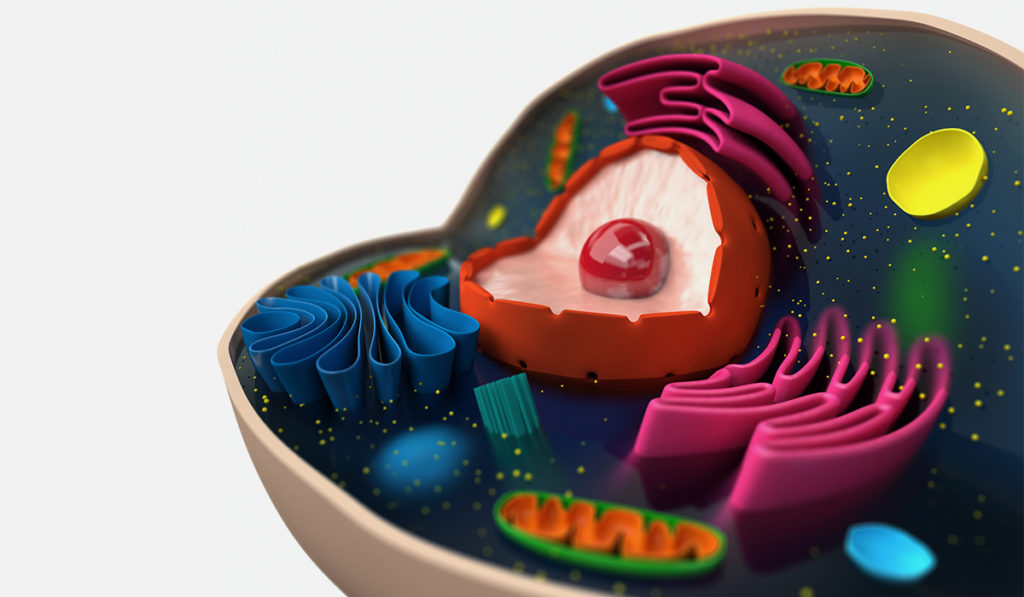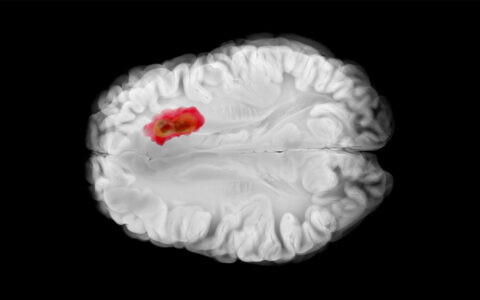Extracellular vesicles (EVs), which include exosomes, are bilipid modules that communicate important information throughout the body. In addition to proteins and lipids, EVs can carry RNA, which can affect gene expression in recipient cells. RNA-containing EVs have been shown to play a critical role in tumor growth. Less understood are the mechanisms by which EVs are formed and trafficked.
Researchers at Vanderbilt University and Vanderbilt University Medical Center have recently received a $9 million National Cancer Institute grant to conduct studies at the molecular, cellular and tissue levels to elucidate these mechanisms.
Alissa Weaver, M.D., a cancer cell biologist at Vanderbilt, is leading the molecular research into the function of organelles responsible for loading EVs with their cargoes of RNA and protein. “We are doing the basic science on these vesicles because we have to learn how cells form and release them before we can identify biomarkers and successfully intervene with a therapeutic agent,” Weaver said.
“We have to learn how cells form and release them before we can identify biomarkers and successfully intervene with a therapeutic agent.”
Vesicle Formation and Release
RNA-containing EVs can affect various aspects of the tumor microenvironment, including promoting angiogenesis and altering the way cancer cells interact with fibroblasts. Remotely, they can prime metastatic niche sites by interacting with new cells and altering their programming.
Weaver’s work aims at understanding how oncogenic signaling alters the process of cargo selection for vesicles. She is using human colorectal cancer (CRC) cell lines to probe how the endoplasmic reticulum interacts with endosomes and the plasma membrane to form, load and launch RNA exosomes.
“We think the endoplasmic reticulum touches the endosome, triggering the formation of exosomes,” Weaver said. “This contact may also enable the transfer of RNA and RNA-binding complexes into exosomes.”
Impact at the Receptor Site
Extracellular vesicles, while secreted by all cells, are copiously made by cancer cells, Weaver explained. She plans to analyze the transport of these envoys to the receptor site and their mechanism for moving into cells and unpacking cargo. “How these vesicles, once secreted, seek, find and invade other cells is an important corollary to describing their origin,” she said.
Weaver will be using mouse models to study how RNA transfer from exosomes affects tumor growth, and whether it is the RNAs or other cargo (e.g., proteins that mediate cross-talk between cells in colon tumors) that play the greater role in cancer cell proliferation.
Three Project Platforms
This work grew out of a collaboration with Vanderbilt’s Robert Coffey, M.D., who leads the Vanderbilt-Ingram Cancer Center Specialized Program of Research Excellence (SPORE) in gastrointestinal cancer; James Patton, Ph.D., Stevenson Professor of Biological Sciences; Kasey Vickers, Ph.D., assistant professor of medicine; and Qi Liu, Ph.D., assistant professor of bioinformatics.
The Vanderbilt team is approaching the newly-funded research on three telescoping levels.
Patton, an expert in microRNAs, is studying RNA sequences and modifications that may allow for the selection of RNA and RNA-binding proteins that go into the vesicles. Weaver is studying the intra- and extracellular trafficking mechanisms and also looking at how they manifest in mouse models. Coffey is working with human tissue, 3D organoids and mouse models to see what impact these mechanisms have on the colon crypt and tumor tissue.
“We have to start by understanding all of these natural mechanisms first,” Weaver said. “Ultimately, what we are learning will help scientists engineer therapeutic RNA-containing vesicles. Also, we hypothesize that certain microRNAs make cells drug-resistant, so understanding why this happens could teach us how to evade these barriers to current drug therapy.”
“Ultimately, what we are learning will help scientists engineer therapeutic RNA-containing vesicles.”




